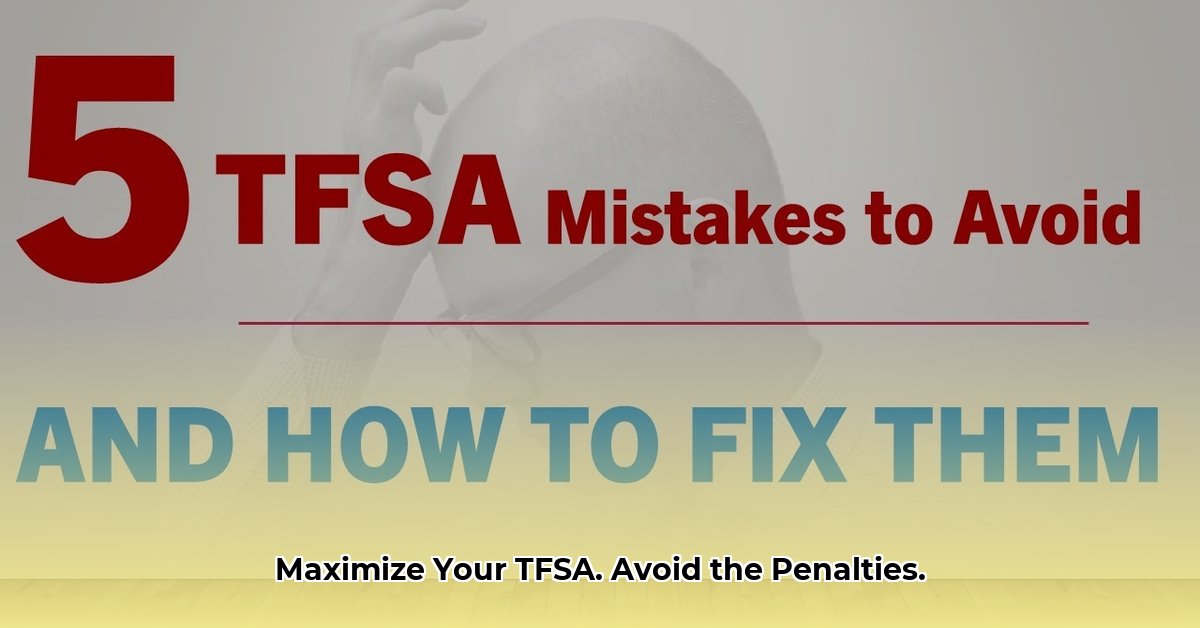Want to maximize your TFSA’s tax-free growth? This guide provides clear, step-by-step instructions to help you understand the rules and avoid costly penalties. We’ll cover everything from contribution limits and withdrawals to qualified investments and trading activity. Whether you’re a seasoned investor or just starting out, this guide will empower you to confidently manage your TFSA.
Understanding TFSA Contribution Limits
Knowing your TFSA contribution limit is crucial for avoiding penalties. This limit, set annually by the government, is the maximum you can contribute each year without facing penalties. The 2024 limit is $7,000. Unused contribution room accumulates, increasing your allowance over time. This means that even if you didn’t contribute the maximum in previous years, that unused space is added to your total available contribution room.
Calculating Your Total Contribution Room
Your total contribution room is the sum of each year’s limit since your first year of eligibility (the year you turned 18 and became a Canadian resident), minus your total contributions, plus withdrawals from previous years. The CRA provides personalized details through their My Account portal—this online tool simplifies tracking and helps ensure accuracy.
Withdrawals and Your Contribution Room
One of the advantages of a TFSA is the flexibility of withdrawals. When you withdraw funds, this amount is added back to your contribution room, but not until the following year. For example, a $5,000 withdrawal in 2024 will increase your 2025 contribution room, not your 2024 room.
Permitted Investments and Residency Requirements
TFSAs offer flexibility in investment choices. Generally, qualified investments include stocks, bonds, GICs, and mutual funds. However, some investments, like those in private corporations or certain complex financial instruments, are not permitted. It’s always best to refer to the CRA website for a comprehensive list of qualified investments.
Maintaining Canadian Residency
TFSAs are designed for Canadian residents. Contributing while a non-resident incurs a 1% monthly penalty on the contributed amount. This penalty ceases upon re-establishing residency.
Navigating TFSA Trading Activity
While TFSAs are geared towards long-term savings, there are no explicit rules against trading. However, excessive trading may raise red flags with the CRA, potentially leading to profits being taxed as business income. This negates the tax-sheltered benefits of a TFSA. Hence, a long-term investment strategy is generally recommended. Consulting with a financial advisor may be beneficial to develop a tailored strategy.
Over-Contributions and How to Fix Them
Over-contributing triggers a 1% monthly penalty on the excess amount. Here’s how to address and prevent over-contributions:
Withdrawing Excess Contributions
- Contact your financial institution: Inform them of the over-contribution and your intent to withdraw the excess funds.
- Calculate the exact over-contribution: Determine precisely how much you contributed above your limit.
- Confirm the withdrawal: Obtain confirmation from your financial institution. Keep records of the transaction.
Appealing Penalties
If you believe the over-contribution was due to circumstances beyond your control, such as inaccurate information from your financial institution, you can appeal to the CRA. Gather all supporting documentation and provide a clear, concise explanation of the situation.
How to Calculate Your TFSA Contribution Room
- Determine your eligibility year: This is the year you turned 18 and became a Canadian resident.
- Calculate cumulative contribution limits: Add up the yearly limits from your eligibility year to the present (2024).
- Subtract total contributions: Subtract all contributions you’ve made to your TFSA.
- Add back previous withdrawals: Add the total of any withdrawals made in previous years. This amount is added back to your contribution room in the following year.
Example: If you became eligible in 2018, contributed a total of $35,000, and withdrew $3,000 in 2023:
$52,000 (cumulative limits 2018-2024) – $35,000 (total contributions) + $3,000 (2023 withdrawal) = $20,000 (2024 contribution room)
Tips to Prevent Over-Contributions
- Regularly check your contribution room: The CRA My Account portal provides up-to-date information.
- Keep meticulous records: Track every contribution and withdrawal.
- Consult a financial advisor: Seek personalized guidance to optimize your TFSA strategy.
Quick Reference Guide
| Action | Potential Penalty | How to Avoid It |
|---|---|---|
| Over-contribution | 1% of the excess amount, per month | Check your contribution room via CRA My Account. |
| Re-contributing withdrawals too soon | Same as over-contribution | Wait until the following year to re-contribute. |
| Holding prohibited investments | Tax on earnings, potential loss of TFSA status | Consult the CRA list of qualified investments. |
| Contributing while a non-resident | 1% of contributions, per month | Contribute only as a Canadian resident. |
| Excessive trading | Profits may be taxed as business income | Focus on a long-term investment strategy. |
Disclaimer: While the information provided is believed to be accurate, it is not financial advice. Consult a qualified financial advisor for personalized guidance.







